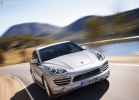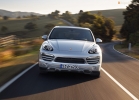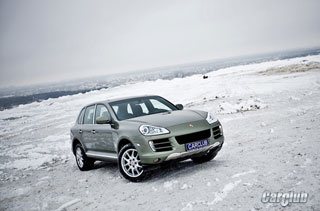Porsche Cayenne test drive since 2010 SUV
The first diesel porsche. Tasty or not?
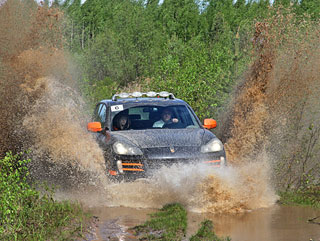 On Ferrari for firewood, on Mazerati for manure it seems that everything rolls to this. It is not easy for to break through image barriers, but automobile companies have been doing this lately. Otherwise, do not survive.
On Ferrari for firewood, on Mazerati for manure it seems that everything rolls to this. It is not easy for to break through image barriers, but automobile companies have been doing this lately. Otherwise, do not survive. S Transsyberia, like any other Cayenne modification, is able to let the driver feel like an off -road Lord, but with only one amendment, the car must be ready. At least it must be shod in off -road tires with developed primers. We overcame all obstacles during the test on highway tires
Take the same Porsche. The legendary brand, which has traditionally been engaged in the release of asphalt Speed \u200b\u200bcarriers, for no reason in 2002 begins to rivet the SUVs. Strongly? Not that word. And now it’s even more bad. The company began to produce diesel cars.
Of course, imagine 911 GT3 RS, feeding on heavy fuel is still difficult. But Cayenne is easy. Moreover, nothing needs to be represented. The car was launched in production at the end of last year and is already sold with us.
To find out how the diesel Cayenne sounds and under what sauce it is served, I went with a handful of journalists to a two -day marathon, which was arranged by Porsche on the roads of the Moscow and Tver regions. Almost all Cayenne modifications presented in Russia S, Turbo, GTS took part in the mileage. There was even an image s translssyberia
Cayenne geometry is, of course, good, but, as they say, there is a nuance. The only thing that protects the paintwork below the belt from the surprises of the off -road, a pair of plastic aprons on the front and rear bumers and the overlays on the thresholds, everything else remains unprotected
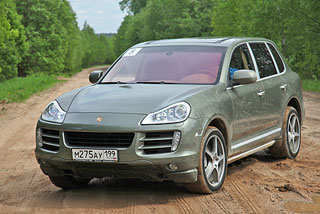 We drove along the broken asphalt and soil paths of quality below the skirting board. They tasted the mud on the slope of the off -road route. In general, the troll arranged a good one. But this is not the main thing (about the possibilities of the Tuareg chassis, on the basis of which Cayenne stands, you can read here). For me, it was much more important to compare the diesel Cayenne with its gasoline modifications.
We drove along the broken asphalt and soil paths of quality below the skirting board. They tasted the mud on the slope of the off -road route. In general, the troll arranged a good one. But this is not the main thing (about the possibilities of the Tuareg chassis, on the basis of which Cayenne stands, you can read here). For me, it was much more important to compare the diesel Cayenne with its gasoline modifications. Pushing all my colleagues, I break through to the diesel engine first. I jump behind the wheel, conquer the surroundings motor announces a stiff tractor hiccup, can you imagine this? I can, but only if you strongly strain imagined, calmly. Kidding! In fact, the engine is quieter than water. Vibrations? After all, they are not at all under the hood, the old acquaintance V6 3.0 TDI (is controlled by the Audi Q5/Q7 and Touareg), which produces 240 hp. (40004400 rpm) and 550 Nm (20002250 rpm) torque.
I taxi on the highway. Sole on the floor. Once. Two. Three engines with a fox are removed to a maximum, a six-speed hydrotransformer automatic machine closes the steps 8.3 seconds after the start of the arrow speedometer is already opposite the risks of 100. It is not eleven for the 2.3-ton gibberish, fourteen even up to 120 the speaker is wonderful, but then the diesel cayen Sprinkles right before our eyes. Why is that?
Low -profile highway rubber is not the best option on a holey asphalt and off -road. One of my colleagues at Cayenne S in the Tver region still struck the cylinder, falling into a bad hole with sharp edges
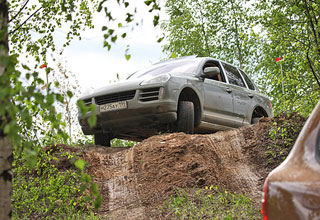 Everything is simple. Diesel engines traditionally have a large torque, but their working speed range is narrow (in our case, a maximum of 4500 rpm). To provide simultaneously acceptable dynamics and good maximum speed, the number of steps in the gearbox is more required compared to gasoline engines.
Everything is simple. Diesel engines traditionally have a large torque, but their working speed range is narrow (in our case, a maximum of 4500 rpm). To provide simultaneously acceptable dynamics and good maximum speed, the number of steps in the gearbox is more required compared to gasoline engines. But the Volkswagen does not have the corresponding box only omnipotent six -speed guidrotransformer Tiptronic. To develop an unit from scratch for only diesel modification is too expensive, so the engineers had to adapt the transmission to the diesel engine, compromise and play with gear rates.
Despite the absence of soil -spaces, in a fragmented rut, an advanced all -wheel drive transmission with a lowering and locks of the center and rear differential allows Kayenn to move quite confidently
The first four programs were made relatively short so that in the city crowding at moderate speeds, Cayenne could demonstrate their agility in the stream. And the fifth and sixth programs, on the contrary, were stretched in order to provide an acceptable maximum speed. Good. At least some (only 214 km/h) were provided, but only protracted overtaking on the suburban highway at high speed of pleasure is not delivered.
... and even successfully force slippery forty -degree lifts
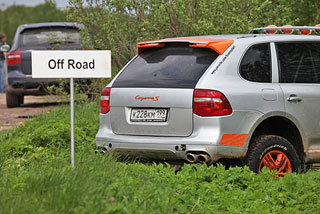 It turns out that in its dynamic indicators a diesel version somewhere in the middle between the usual Cayenne (from 2,547,100 rubles) with a 290-horsepower six-cylinder engine (385 Nm) and Cayenne S (from 3,379,900), equipped with 385-horsed (500 nm (500 nm ) V8. Recall that the first gets to hundreds in 8.5 seconds and can just fly at speeds up to 227 km/h. The second 100 km/h exchanges in 6.8 seconds, and the maximum speed is 250 km/h. Of course, Cayenne S is noticeably more dynamic, but also noticeably more expensive, both in price and operation.
It turns out that in its dynamic indicators a diesel version somewhere in the middle between the usual Cayenne (from 2,547,100 rubles) with a 290-horsepower six-cylinder engine (385 Nm) and Cayenne S (from 3,379,900), equipped with 385-horsed (500 nm (500 nm ) V8. Recall that the first gets to hundreds in 8.5 seconds and can just fly at speeds up to 227 km/h. The second 100 km/h exchanges in 6.8 seconds, and the maximum speed is 250 km/h. Of course, Cayenne S is noticeably more dynamic, but also noticeably more expensive, both in price and operation. But if you compare the usual Cayenne and Cayenne Diesel, which are exactly the same in cost, then the second, if you put economy at the forefront, is much preferable. In case of crazy annealing on suburban roads and moderate off -road, our Dizyen consumed a maximum of 12.5 liters of fuel per hundred kilometers. If you go calmly and measuredly, you can easily meet in the city’s passport 7.9 liters per hundred. Again, if you save, then in the city a diesel SUV will ask for no more than 11.6 liters per hundred kilometers.
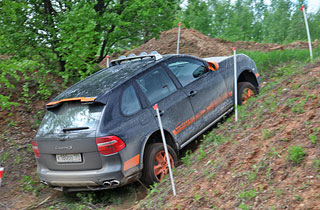 Suspension passages by off -road standards at the Cayenne/Touareg chassis are small, but the car is not afraid of diagonal hanging. Unlike Touareg, where the craving between the axes is divided in a ratio of 50:50, Cayenne torque is distributed in a ratio of 38:62. Thanks to this, in the sliding under the gas, the latter demonstrates clearly expressed rear -wheel drive habits
Suspension passages by off -road standards at the Cayenne/Touareg chassis are small, but the car is not afraid of diagonal hanging. Unlike Touareg, where the craving between the axes is divided in a ratio of 50:50, Cayenne torque is distributed in a ratio of 38:62. Thanks to this, in the sliding under the gas, the latter demonstrates clearly expressed rear -wheel drive habits But ordinary gasoline Cayenne cannot boast of such numbers. In our test mode, the consumption of 95th gasoline was held in the city about 17 liters per hundred. Passport fuel consumption in the city 18.3 l/100 km, on the highway 9.8.
So the fans of the Kayenes who do not chase their speed too much have another opportunity to save. This is not bad. The rational and preoccupied with the ecology of the old woman Europe has long sat down on a diesel topic. And what? The diesel fuel is cheaper in itself, diesel engines are economical and tracted and recently they are also comfortable in line for us. However, those to whom traditions are not rested can, as before, give their vote for genetically more correct dynamic gasoline versions. The main thing would be to choose from.
Text: Vitaly Kabyshev
Photo: Vitaly Kabyshev
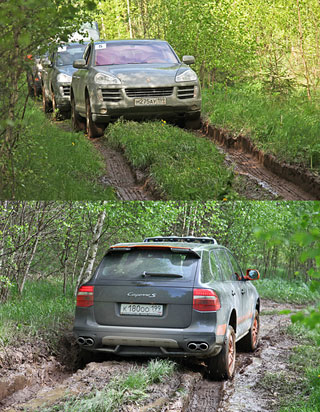
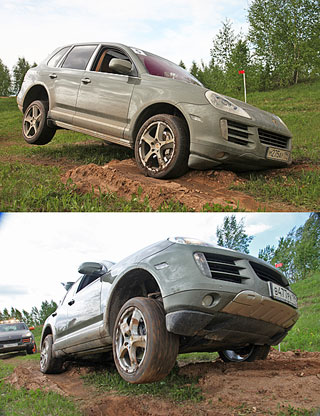
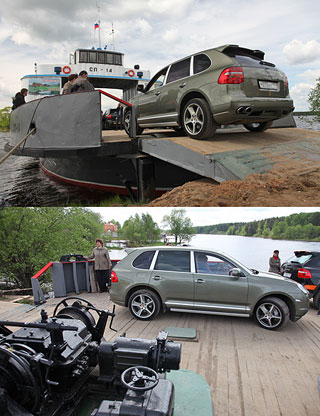
Source: Auto.mail.ru

